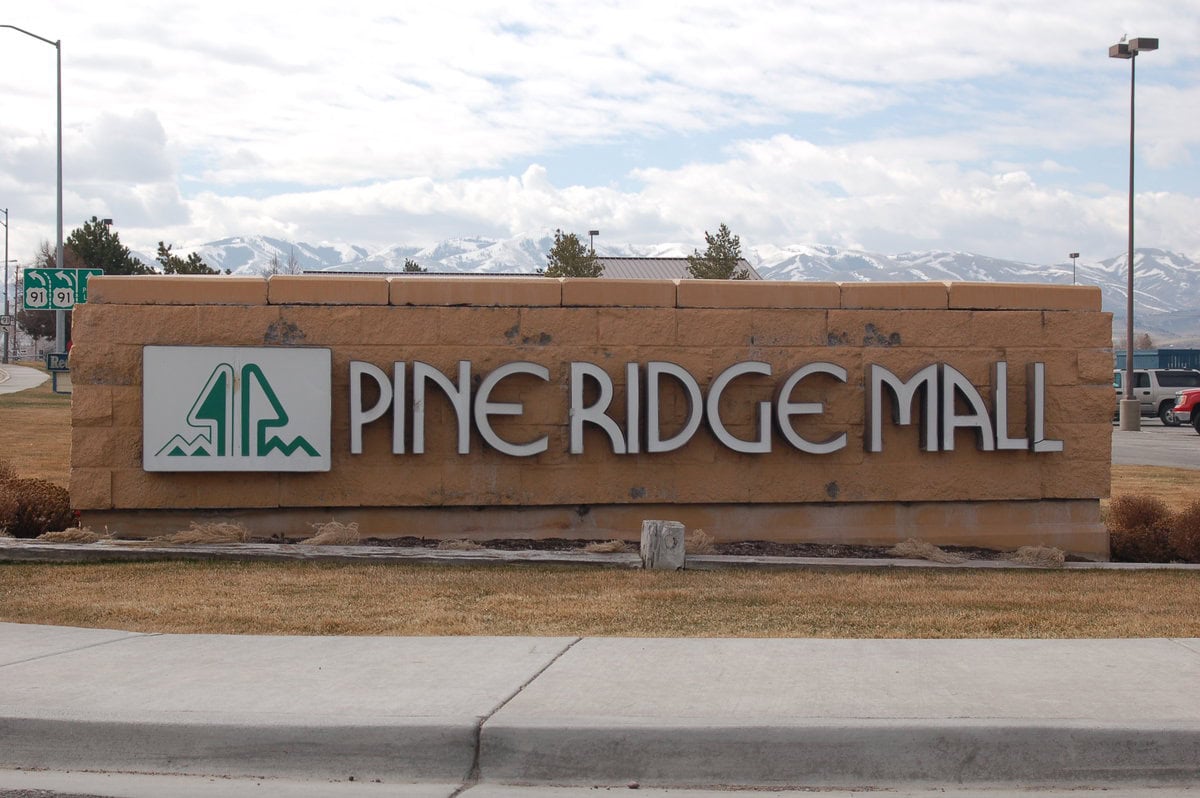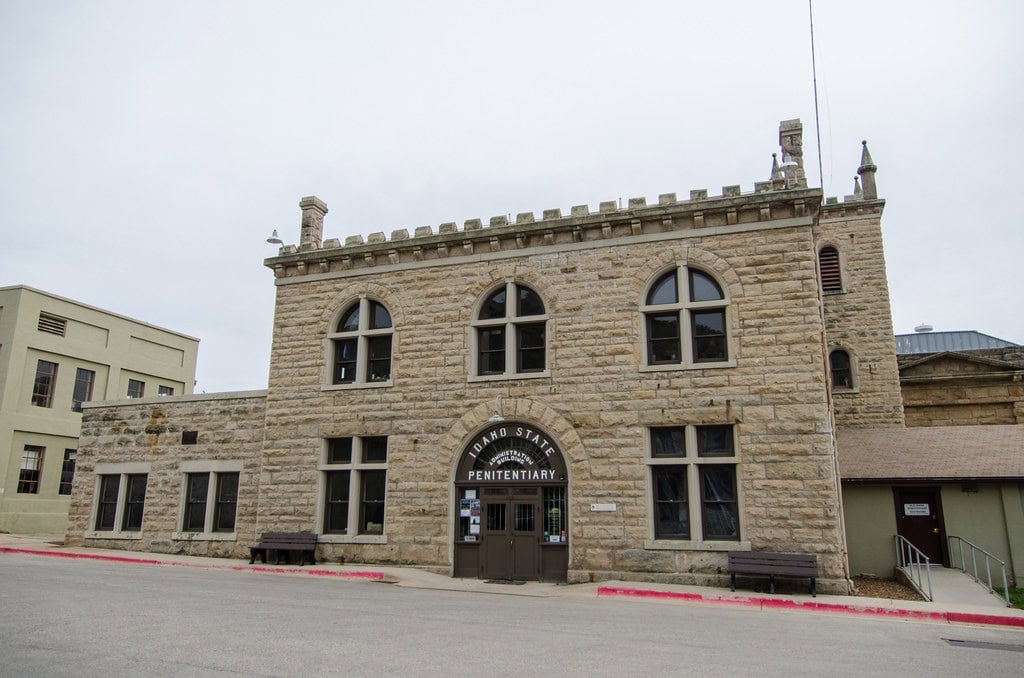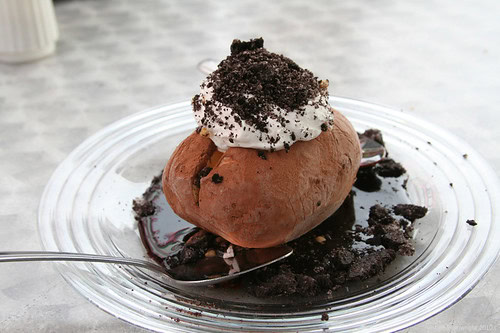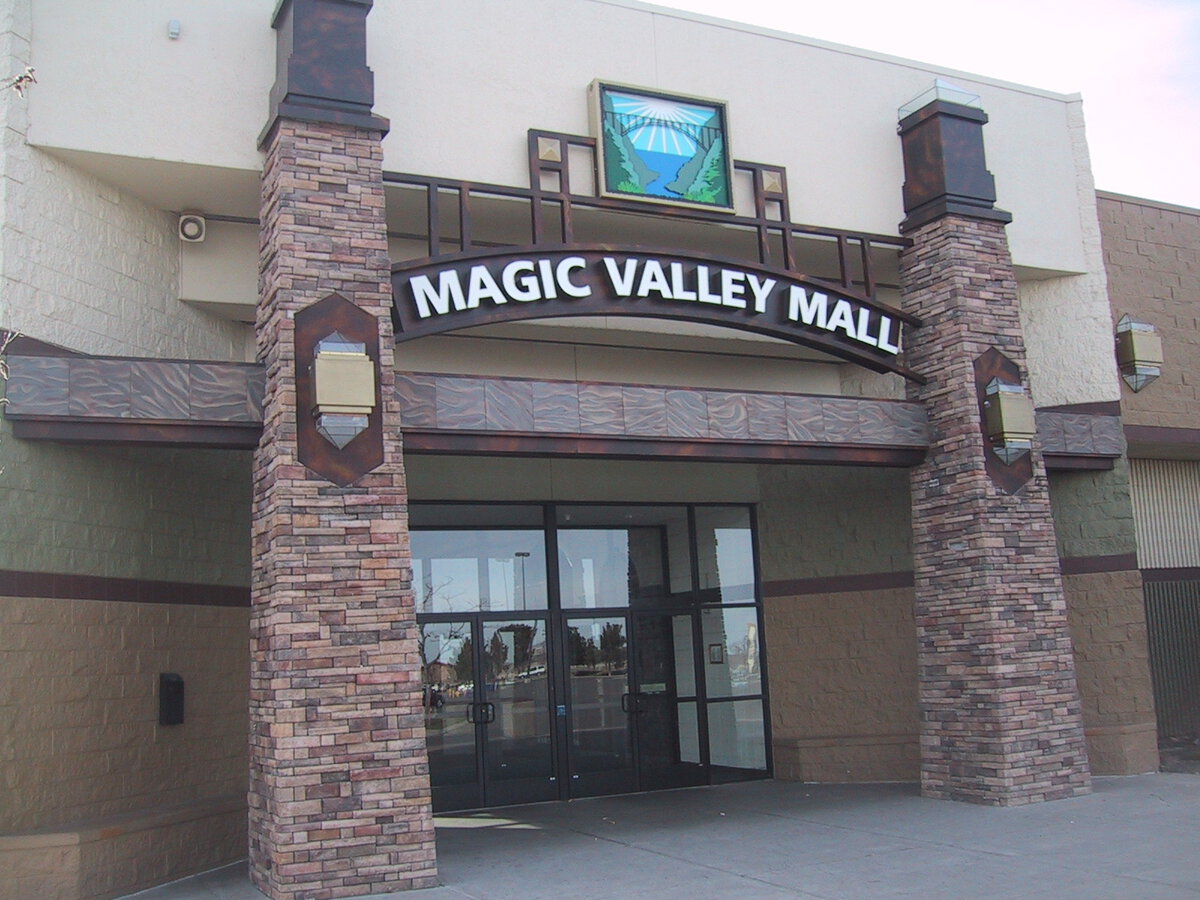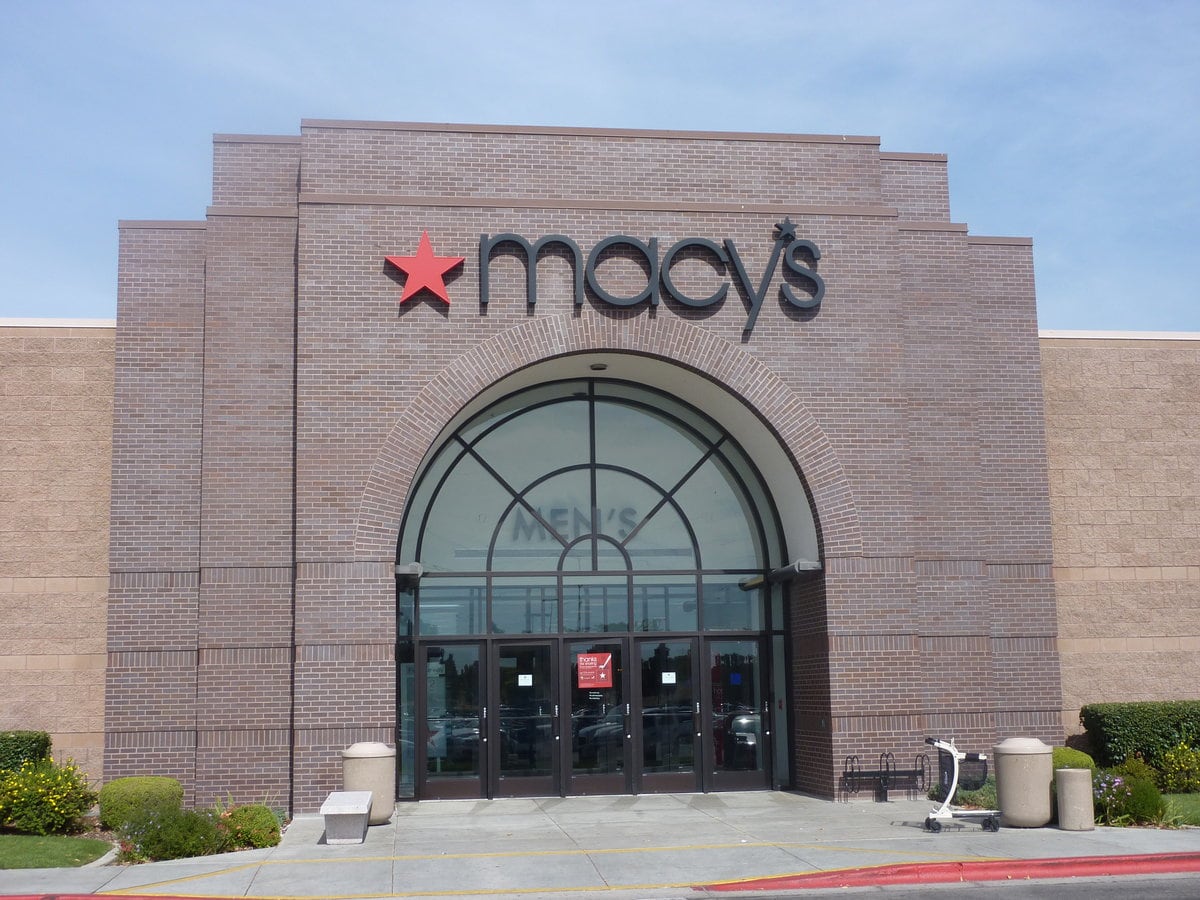The Mall That Was Meant to Last
The JCPenney sign flickers at dusk, its white glow fading in and out like an old radio signal.
Inside, shelves still hold discounted winter coats. Their price tags were slashed one last time. The air smells of polished tile and stale popcorn from a food court where only a couple of vendors remain.
Pine Ridge Mall in Chubbuck, Idaho, was never meant to feel this way.
When it opened in 1981, the developers at Price Development Corporation envisioned something different.
This shopping center would pull customers off Interstate 86 and keep them from driving to Salt Lake City or Boise for department store deals.
It had everything: The Bon Marché, JCPenney, and ZCMI as anchor stores, each one drawing steady foot traffic.
Families spent weekends here, moving from store to store, filling plastic bags with seasonal sales, and stopping for an ice cream cone at the food court.
The design was simple—one-level, wide hallways and a clean layout that felt easy to navigate.
The anchor stores sat at opposite ends, making sure shoppers walked past as many storefronts as possible.
At its peak, Pine Ridge had over 50 stores, selling everything from jewelry to electronics.
By the 1990s, it was expanding. Sears arrived, relocating from the struggling Pocatello Mall, and Shopko moved in, giving the mall even more retail power.
Local newspaper ads hyped holiday shopping events, back-to-school blowouts, and tax-free weekends.
Parking lots filled up before sunrise on Black Friday. At Christmas, a Santa Claus station sat in the middle of the mall, right where families lined up for annual portraits.
It wasn’t just a shopping destination—it was the place to go for things to do in Chubbuck, Idaho.
For years, the plan worked. Shoppers came, stores thrived, and Pine Ridge Mall stood strong. But retail wasn’t built to last forever.
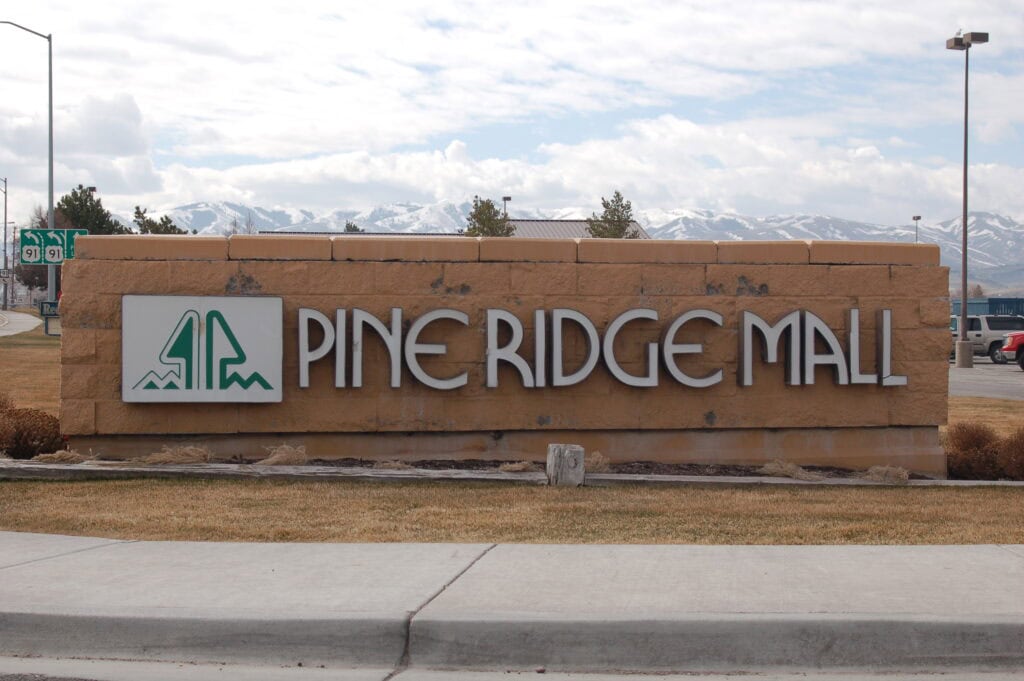
The First Cracks in the Foundation
Retail was changing. In 2001, Dillard’s took over the old ZCMI space, but it lasted only seven years before shutting its doors in 2008.
The lights went out, the displays disappeared, and another empty storefront remained.
In 2006, a “Store Closing” banner stretched across Macy’s entrance, and its red letters were a warning.
The name had barely settled on the building before it was gone, and another department store could not hold its ground at Pine Ridge Mall.
The space sat empty for months before Party Palace moved in, selling seasonal decorations in a space once lined with perfume counters and designer handbags.
Herberger’s arrived in 2012, attempting to fill the gap. For a while, it worked. Sales events brought customers in, but the store struggled to compete with bigger chains.
By 2018, it was done. That same year, The Bon-Ton, Herberger’s parent company, filed for bankruptcy, sealing the fate of every location.
Pine Ridge Mall lost another anchor.
The ownership changed hands, too. In 2013, General Growth Properties sold the mall to Farmer Holding Co. for $9.05 million.
The new owners promised a fresh approach, but retailers weren’t biting. In 2014, Sears, another longtime anchor, announced it would close.
That store had survived recessions, shifts in consumer trends, and even the downfall of Pocatello Mall.
But it couldn’t outlast the collapse of its own company.
Shopko, one of the mall’s later additions, stayed on for a few more years. But in early 2019, it, too, shut down.
There were more darkened windows and vacant space. By then, the mall was losing not just stores but also its purpose.
The Decline Becomes Impossible to Ignore
Footsteps echoed in the hallways now, the crowds long gone. The food court, once packed on weekends, had more empty tables than customers.
Pine Ridge Mall was still standing, but the definition of a mall was shifting.
Some spaces found new life. In 2014, C-A-L Ranch Stores took over the old Macy’s location, bringing in Western wear and farm supplies.
It wasn’t the kind of retail the mall had originally been built for, but it kept a storefront occupied.
In 2016, Hobby Lobby arrived, adding another national chain to the mix. But these weren’t traditional mall stores—they were big-box retailers that could just as easily exist in a standalone location.
Then came the changes no one expected. In 2019, Planet Fitness moved into the old Herberger’s space.
The mall, once a place for shopping, now had rows of treadmills and weight machines where racks of dresses used to be.
That same year, a charter school, Gem Prep, took over the empty Sears building.
Instead of holiday sales and clearance events, students filled the space, turning what had been a struggling department store into classrooms.
By 2021, the mall had fewer than 50 stores left. Some were national retailers, and others were local businesses trying to survive in a place with no longer steady foot traffic.
Big Deal Outlet—A Discount Bet on Pine Ridge Mall
The automatic doors slide open, revealing aisles packed with closeout deals on groceries, clothing, and home goods, all marked down and moving fast.
In October 2021, Big Deal Outlet opened, taking over 30,000 sq. ft. of the old Shopko building. It was a risk, maybe, but one that paid off.
Big Deal Outlet thrives on surplus—products pulled from Walmart, Target, Amazon, and Costco, all selling for 30–50% less than retail.
The Idaho Falls-based chain picked Chubbuck as its next move, betting that the same discount-driven appeal would work here.
And it has. Shoppers walk out with carts full of marked-down snacks, half-priced shoes, and kitchen gadgets they didn’t know they needed.
Sharing space with C-A-L Ranch Stores, which relocated from its former Macy’s spot, Big Deal Outlet became more than just another tenant.
It brought in foot traffic, something Pine Ridge Mall hadn’t seen in years. The store doesn’t need window displays or a prime mall entrance—its pull comes from price tags and word of mouth.
In a shopping center losing its old identity, Big Deal Outlet proves one thing: people still come for a good deal.
The End of an Era—And a New Beginning?
The old JCPenney sign still hangs over its entrance, but the shelves inside are already half-empty.
Clearance tags cling to the last racks of unsold clothes. In a few months, this space will be dark, and another anchor will be lost.
The last original anchor store at Pine Ridge Mall is closing. On February 9, 2025, the company confirmed what many had expected—the Chubbuck location would close by May.
JCPenney had been here since the beginning. In 1981, it opened as one of the mall’s first tenants, drawing in steady business for decades.
Even as other stores disappeared, it held on. But retail chains had been pulling back for years.
This wasn’t about Pine Ridge Mall alone—JCPenney had been shrinking its footprint across the country, struggling against online competition and declining foot traffic.
By the time JCPenney made its announcement, Pine Ridge Mall was already in transition.
SimonCRE, a commercial real estate firm, had purchased the property in 2024 with plans to redevelop it.
The vision? An open-air shopping center that would strip away the traditional mall format and attract more big-box retailers.
The early plans focused on demolition. The enclosed walkways that once connected the mall’s stores would be torn down and replaced with separate storefronts and parking directly in front of each business.
The hope was that an updated layout would attract new tenants—ones that didn’t rely on foot traffic from a mall that no longer had enough shoppers.
But demolition alone wouldn’t bring people back. SimonCRE needed new stores to sign on. By early 2025, a few commitments were already in place.
The biggest? Target. A 128,000-square-foot location was in the works, set to fill part of the redeveloped space.
It wouldn’t be a full return to Pine Ridge Mall’s heyday, but it was movement.
The mall that once depended on department stores was shifting toward something else entirely.

